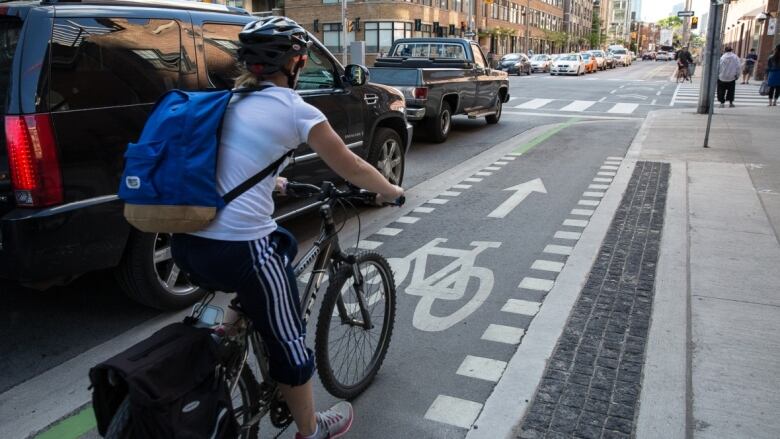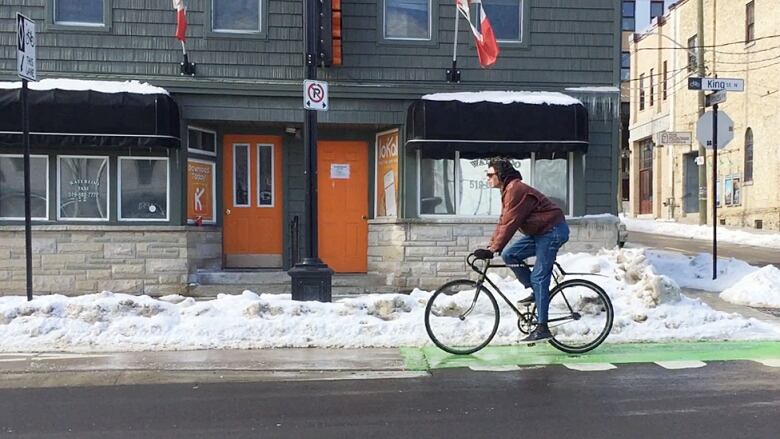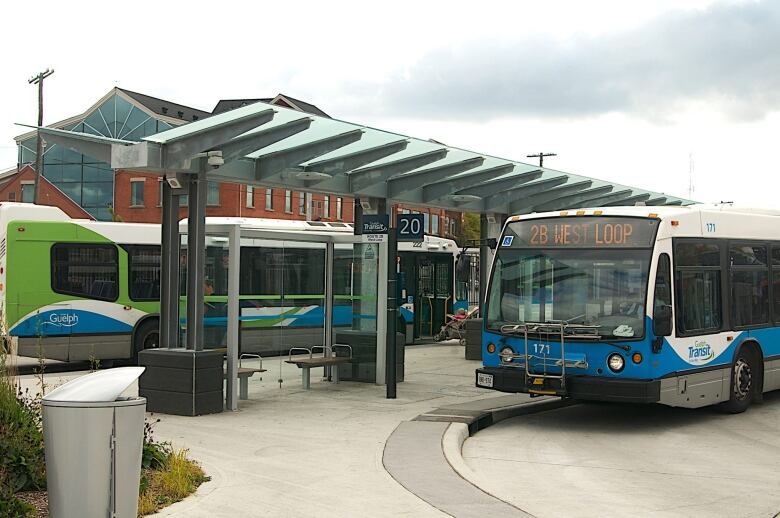New options for pedestrians and cyclists during COVID-19 pandemic
Physical distancing requirements and changing usage patterns during COVID-19 pandemic prompt response

A number of bike lane infrastructure initiatives were approved forthe region recently, with new options for pedestrians and cyclists during the COVID-19 pandemic.
Rapid implementation of temporary active-transportation infrastructure in response to the pandemic was among items approved by the regional council at its meeting on Wednesday.
After an overwhelming response to public consultation on the region's engagement platform, curb lanes on the following regional roads will be temporarily closed until October 31, and turned into dedicated bike lanes:
- King Street/Coronation Boulevard/Dundas Street from Bishop Street to Beverly Street, Cambridge.
- Westmount Road from Block Line Road to University Avenue, Kitchener and Waterloo.
- Frederick Street from Weber Street to Lancaster Street, Kitchener.
- Erb Street from Westmount Road to Caroline Street, Waterloo.
- Erb Street from Peppler Street to Margaret Avenue (one lane only), Waterloo.
- Bridgeport Road, King Street to Margaret Avenue (one lane only), Waterloo.

These road space reallocations will create 30 kmof new temporary bike lanes on regional roads.
Regional staff will coordinate this initiative with staff from the three cities to help ensure collaboration and to take advantage of possible connections with facilities on city roads.
City of Kitchener
Also on Wednesday, the City of Kitchener approved a range of changes to the city's streets and trails.
With nearly double the number of people using some trails, the proposal is a response to increased demand for physical distancing space and active transportation options among both commuters and recreational users.
"The COVID-19 pandemic challenges us to rapidly explore new ways of doing things," said Kitchener Mayor Berry Vrbanovic.
"We're seeing demand for pedestrian and cycling capacity on our streets and trails like never before. At the same time, traffic volumes, even at peak times of the day, are expected to remain low throughout the recovery period. I'm pleased to see city staff thinking about new ways to use our streets in targeted locations to adapt to this new reality."

The proposal calls for a number of initiatives totalling more than 13.5 km of active transportation facilities, including bike lanes, multi-use trails and a number of Slow Streets, which would be temporarily changed to create slower and safer neighbourhood streets that are more comfortable for walking, rolling and biking.
Streets designated as Slow Streets will not be fully closed to vehicle traffic but will be closed to through traffic meaning only emergency vehicles, maintenance vehicles, delivery vehicles and people who live on the street are intended to have access.
Other initiatives are aimed at supporting small businesses by reworking the rules governing roadways, such as converting sections of King Street and Belmont Avenue into seasonal patio areas for restaurants and allowing food trucks to operate in residential zones if they meet certain criteria such as having a valid business licence, staying for no longer than two hours in a single location and ensuring trucks are parked only in legal parking spots.
Bikelanes proposed for 3 streets
In addition,bikelaneshave been proposed for Krug Street, Franklin Street and Stirling Avenue. The proposedbikelanesare focused on creating city-wide connections, like the proposedlaneon Krug, which would cross under the Conestoga Parkway, enabling downtown access for cyclists from the east end of the city.
New securebikeparking facilities at Duke andOntario, andKitchenerMarket are now open to public use, bringing the total to five facilities throughout downtown.
Delta Street closure
Delta Street will be closed to vehicle traffic in anticipation of its eventual conversion to a multi-use trail next year, and Gaukel Street will be converted into a seasonal seating area. New trail upgrades are planned for Wilson Avenue and through Budd Park.
"As we carefully and gradually move into the recovery phase of the pandemic, the need for physical distancing means we have to adjust how we prioritize traffic on key pedestrian connections," said Ward 8 Councillor Margaret Johnston.
"We also have to rethink the way we do business. The conversion of Belmont Village to allow for larger patios and additional seating is a concrete way we can help our small businesses thrive in the new normal of physically-distant dining."
The proposed cycling and trail projects would be funded through a provincial grant awarded to the City ofKitchenerin 2018 through the Ontario Municipal Commuter Cycling program. The remaining projects will be funded through the city's traffic calming budget.
City of Waterloo
To help physical distancing during COVID-19, Waterloo is creating safer spaces for walking, cycling and other modes of active transportation.
Senior project engineer Christopher Hodgson saidthe city has nearlycompletedtheupdate toits Transportation Master Plan (TMP), which includes a strong focus on improving Active Transportation through updated policy and infrastructure needs.
The plan includes updating the cycling network with a focus on separated infrastructure and new road crossing techniques.
Hodgson saidadditional policy direction is through Complete Streets planning and design, vision zero principles to create safer streets, improved winter maintenance operations and preparing the city for emerging technologies.
City of Cambridge
Meanwhile, Cambridge staff have been working with the region and neighbouring municipalities to consider options for temporarily reallocating road space towards active transportation during the pandemic.
A report is going to City Council in July seeking direction for staff to identify potential active transportation projects.
Expansion in Guelph
Also this week, the City of Guelph says it will be able to move ahead with a new Guelph central station building that's accessible and energy efficient.
The city will receive $8.35 million through theInvesting in Canada infrastructure plan, some of which will be used to expand its protected bike path network.
The project includes intersection improvements for people on bikes and protected bike lanes.
The lanes will be considered along:
- College Avenue from Janefield Avenue to Victoria Road.
- Eramosa Road from Woolwich Street to Victoria Road.
- Gordon Street from Wellington Street to Clair Road.













_(720p).jpg)


 OFFICIAL HD MUSIC VIDEO.jpg)
.jpg)



























































































